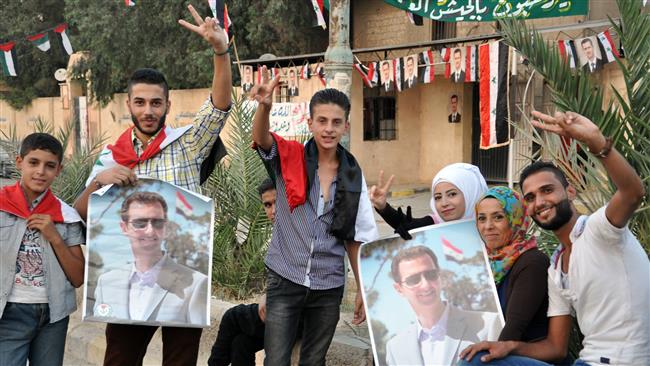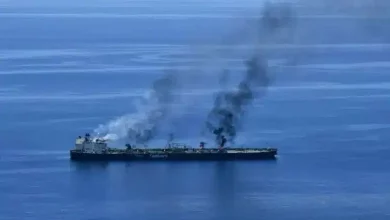‘Dayr al-Zawr siege relief shows Daesh on defensive’


Syrian army forces, backed by allied fighters from popular defense groups, have reached the eastern city of Dayr al-Zawr and broken a nearly three-year siege imposed by Daesh Takfiri terrorists on pro-government areas there. Press TV has talked to Michael Lane, president of American Institute for Foreign Policy, as well as Michael Springmann, a former US diplomat, to discuss the importance of this victory.
Michael Lane is of the opinion that the breaking of Daesh’s prolonged siege on Dayr al-Zawr is a “giant step” in the right direction in terms of the military situation in Syria, adding that the achievement indicates that the terrorist group is now completely in a defensive rather than an offensive position.
Highlighting the significance of the shift in the strategy of the terror group, he explained, “The city has been under siege for almost 3 years. It was a difficult logistic and military effort to keep the city from falling. It was successful. Daesh is apparently now in retreat. So from that angle, it is a very significant occurrence in the world.”
Daesh militants overran large parts of Dayr al-Zawr Province, including its many oil fields in mid-2014 as they seized areas in Syria and neighboring Iraq.
By early 2015, the Takfiri terrorists were in control of parts of the city, and besieged the remaining parts that were under government control.
Lane further noted that the West has been using the Daesh terrorists as “proxies” to remove Syrian President Bashar al-Assad for several years, but the equation changed completely when Russia became heavily involved in the conflict in support of the government in Damascus.
Russia has been running a military campaign against terrorist positions across Syria since September 2015 upon a request from Damascus.
Therefore, the analyst said, Western governments are not happy with the siege relief, because this victory has been gained by a regime that they had long had the objective of toppling and replacing.
“So it is very much a double-edged sword. It has got a certain amount of distaste to it and it is tough for the people who were involved – the West from that point of view – to get particularly excited about this. They want to see the terrorists defeated but they do not want to see them defeated by the Assad regime,” he explained.
Lane further opined that the military alliance between Syria, Russia, Iran and Lebanon’s Hezbollah resistance movement can hugely contribute to regional stability, emphasizing that the “real glue” that holds them together is the Russian participation.
Meanwhile, Michael Springmann, the other panelist on the program, maintained that the reason why the breaking of Dayr al-Zawr’s siege is not a top story to mainstream media is that the United States and its allies “are very unhappy that the wrong side, in their view, is winning” because they have worked very hard to destroy Syria and topple Assad’s regime in the last six years.
“I think it is an effort to continue the blackout on the events of the Syrian government forces with the aid of the Russian forces. They have also had good help from Iran and Hezbollah and these are also organizations and countries which the mainstream media do not like and do their best to play down,” he said.
The analyst further asserted that if forces from Syria, Russia, Iran and Hezbollah hold together, it will be a “vast improvement” and “a great source of more stability for the region.”
Springmann also highlighted the fact that Russian intervention in Syria has been the “key” to victories in the war-torn country, arguing that its military support has propped up the Assad government and prevented its overthrow.
He further predicted that the United States will do its best to continue to destabilize the region and will probably use the Kurds to carry out its agenda.
The United States is already using the so-called Syrian Democratic Forces, which is a coalition of Kurdish and Arab fighters dominated by the Kurdish People’s Protection Units, as its main proxy force fighting on the ground in Syria.








